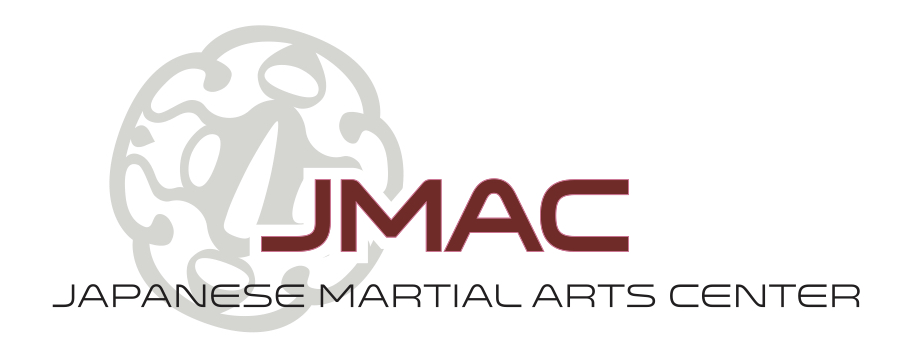There are three aspects to your physical training at the Japanese Martial Arts Center, whether you train for self-defense, physical fitness, or character development. These are as follows: (1) learning new techniques; (2) mastering the techniques you know; and (3) applying the techniques in action. All three aspects are critical if you want to become a really good martial artist.
Learning New Techniques: because you come to a new art with no knowledge, the early part of your martial arts career will be mostly filled with learning new techniques. Typically, you are taught a throw, joint lock, sword cut, or strike - you practice it a bit until you have memorized the pattern - your teacher helps you refine it a bit - and then you are taught another new technique. This is the same whether you study aikido, iaido, judo, jujutsu, karate, or kendo. Because students get a lot of attention at this stage, and because of the excitement and interest of constantly learning new things, many students get addicted to learning new techniques. If they don't manage to move past this addiction, they will never become accomplished martial artists; instead, they will become collectors of skills - dilettantes with no deep understanding of their art. In fact, learning new techniques is the smallest part of the career of a true martial arts master.
Mastering techniques: in the traditional martial arts, we don't really believe in the idea that a person can truly "master" a technique or an art. Instead, we believe that becoming great at martial arts is a lifetime's commitment, and that we must constantly revisit the techniques we know to try to deepen our understanding of them. What we mean when we say that the second aspect of physical training is "mastering techniques" is that we constantly practice what we know, always trying to be better. We analyze each part of a technique, figure out what could be done better, practice that part, then put the whole thing back together and try to make it more efficient, more effective, or more beautiful. If we keep at it long enough with an enthusiastic spirit, we can eventually become quite good at our chosen art.
Applying Techniques in Action: once we have achieved some degree of understanding of our martial arts skills, we can apply them in action. In judo, this is done in randori (free practice), in karate we engage in kumite (sparring), in iaido, we simply repeat our forms again and again, seeking to deepen our ability to focus on and execute the detailed form requirements. Through this application, we learn what works well and what needs more work. We can go back to the mastery stage to analyze and perfect skills that don't work well in application, try them out again, and continue this back and forth process until we succeed at throwing a challenging partner (or whatever our milestone is at the time). This eventually makes us very capable at self-defense, demonstrating, kumite, or whatever our goal for training may be.
Having good training partners is critical for success in application of techniques. Dojo mates who care about your success can make all the difference. They will apply their strength in the right measure so that you can attempt your technique and determine whether or not it works. They can comment on how your technique looks or feels to them, allowing you to use the feedback to make yourself better. As you improve, they can increase their strength and speed, helping you to refine your skills even more. There are very few better friends than a really good training partner.
The Japanese Martial Arts Center would like to thank the many Ann Arbor businesses that support this blog, both self-defense or martial arts-related and others, including: Network Services Group, Art of Japanese Swordsmanship, Shudokan Martial Arts Association, Budo Mind and Body, Art of Judo, Iaido Dot Com, Lorandos and Associates, Oxford Companies, Bluestone Realty Advisors, Portfolio Ann Arbor, Invest Ann Arbor, the Law Office of Nicklaus Suino and the ITAMA Dojo.

3 comments:
The challenge in Iaido is that of the imaginary partner. Imagining an opponent or a group of opponents is a difficult task but is an extremely important aspect of the Iaido waza. We have the opportunity to demonstrate more fully with bokken the placement, distancing and timing of moves and counters. It would be nice to have the opportunity to place multiple opponents and role play the scenario for all of the waza, especially the more complex. The scenarios played out in the waza are fascinating and can help further the hands-on experiential learning that takes place in the dojo.
The challenge in Iaido is that of the imaginary partner. Imagining an opponent or a group of opponents is a difficult task but is an extremely important aspect of the Iaido waza. We have the opportunity to demonstrate more fully with bokken the placement, distancing and timing of moves and counters. It would be nice to have the opportunity to place multiple opponents and role play the scenario for all of the waza, especially the more complex. The scenarios played out in the waza are fascinating and can help further the hands-on experiential learning that takes place in the dojo.
It is amazing how each of the three aspects are so dependent on each other. If one aspect is missing from practice, a martial artist can never expect to become great. The difficulty is that this requires discipline in continually repeating your first learned techniques and movements in order to gain a mastery of them. When new techniques are learned, they frequently build upon the ideas of the beginning techniques.
Also, it is this repetition of technique that helps in real life application. When the techniques have been repeated hundreds or thousands of times, it begins to become an unthought reaction. This unthought reaction is one of the hardest states to attain as a martial artist.
Post a Comment